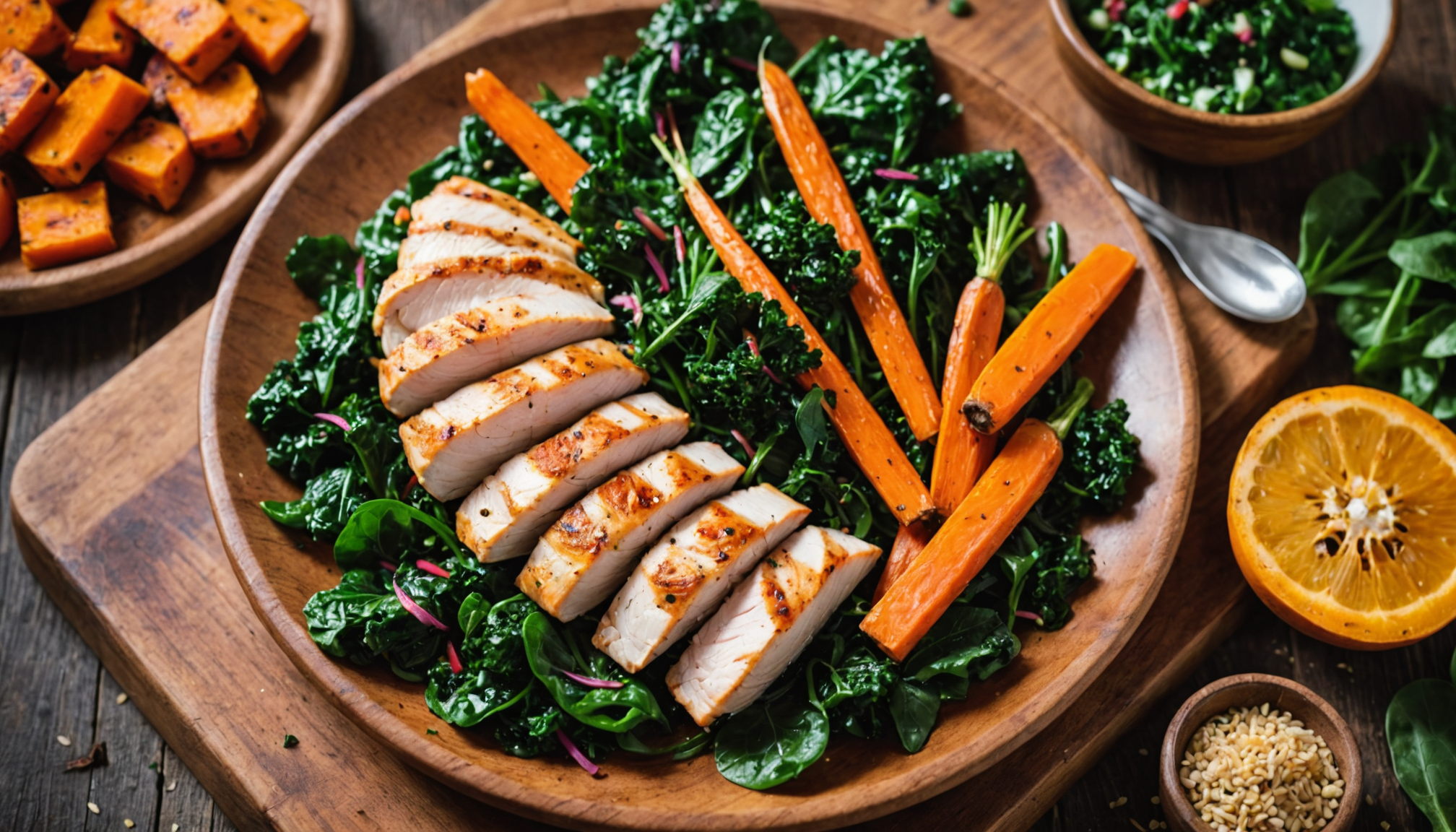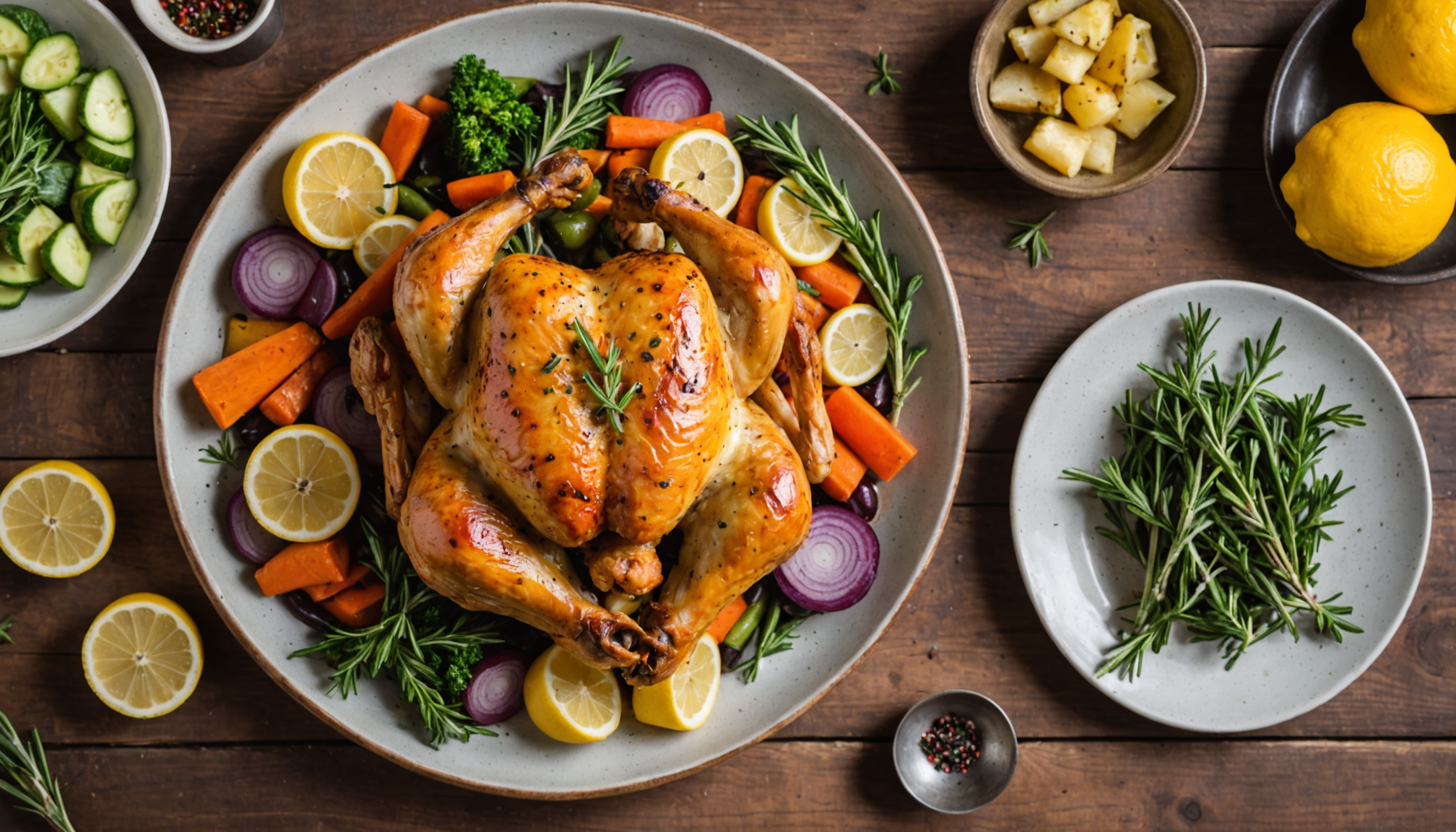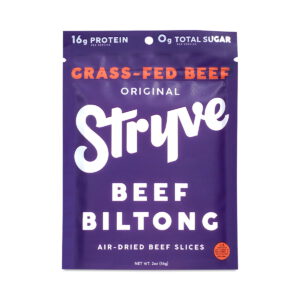- Benefits of Organic Ingredients
- Choosing the Right Organic Chicken
- Fresh Vegetable Pairings
- Easy Organic Chicken Dinner Recipes
- Preparing and Cooking Tips
- Storing Leftovers Safely
When embarking on your grocery shopping journey, especially for those tantalizing organic chicken and veggie dinners, it’s essential to understand the myriad benefits that organic ingredients offer. First and foremost, organic foods are grown without the use of synthetic pesticides and fertilizers, which means fewer harmful chemicals in your diet. This is particularly significant for families who want to prioritize healthy eating practices for their children. Furthermore, organic farming promotes biodiversity and improves soil health, making it a more sustainable choice for the environment.
For those on a budget, fear not! Organic options can sometimes come at a premium, but by shopping strategically, you can still afford nutritious food. Consider purchasing in bulk or from local farmer’s markets, where you can often find fresh, organic vegetables at more affordable prices. Not only will you save money, but you’ll also be supporting your local economy and ensuring that your produce is fresh and seasonal.
Vegan consumers should also take note; incorporating organic vegetables can greatly enhance the nutritional profile of plant-based meals. Prioritize leafy greens, cruciferous vegetables like broccoli and kale, and colorful bell peppers, which are examples of nutritious, organic options that complement your chicken dinner perfectly.
When shopping for ingredients online, always check the seller’s certifications to ensure the products are genuinely organic. Look for third-party certifications such as USDA Organic, which guarantee that standards are met. Additionally, make sure to read reviews and check ratings to avoid potential scams — prioritizing safety in your shopping experience is paramount.
- Shop Local: Support local farmers’ markets for fresher and occasionally cheaper produce.
- Buy in Bulk: Consider buying grains and legumes in bulk to cut costs.
- Look for Seasonal Produce: Seasonal items are typically fresher and more affordable.
- Check for Certifications: Always verify organic claims both online and offline.
- Reviews Matter: When buying online, take a moment to read product reviews for assurance.
With a bit of preparation and smart shopping tactics, your grocery outings can become a delightful endeavor, filled with the freshest organic ingredients that elevate your meals and promote a healthy lifestyle.
Choosing the Right Organic Chicken
When selecting organic chicken, it’s vital to understand the criteria that set it apart from conventional options. Organic chickens are raised according to specific standards that prioritize their welfare, nutrition, and the safety of the food produced. This begins with the diet of the chickens, which must consist of organic feed that is free from genetically modified organisms (GMOs) and synthetic additives. This organic feed typically includes grains, seeds, and natural supplements that promote healthy growth. Moreover, these chickens are generally raised in environments that allow for natural behaviors, contributing to their overall health and well-being.
When shopping for organic chicken, look for labels that indicate the chicken is USDA certified organic. This certification ensures that the chicken has been raised according to strict regulations that prohibit the use of antibiotics and hormones, which are commonplace in conventional poultry farming. The absence of these substances not only enhances the quality of the meat but also aligns with the principles of healthy eating. Here’s a quick comparison of organic and conventional chicken attributes:
| Attribute | Organic Chicken | Conventional Chicken |
|---|---|---|
| Feed | 100% organic feed, no GMOs | Conventional feed, may include GMOs |
| Antibiotics | No antibiotics used | May be administered regularly |
| Hormones | None allowed | Hormones may be used |
| Living Conditions | Access to outdoor spaces | Typically housed in crowded conditions |
| Flavor & Texture | Often richer and more flavorful | May be more bland due to diet |
Pay attention to how the chickens were raised. Organic standards require that chickens have access to the outdoors, where they can engage in natural behaviors such as scratching the ground and foraging. This not only contributes to a healthier bird but also affects the quality of the meat produced. Studies have shown that meat from pasture-raised or free-range chickens tends to have superior flavor and texture, providing a more enjoyable experience for your chicken dinners.
Another consideration when purchasing organic chicken is the cut of meat you desire. Whole organic chickens can be an economical choice, offering versatility for various recipes. Opting for organic thighs or wings can provide a richer taste and juiciness, while organic breasts may be preferred for those looking for leaner options. Always check for freshness; the best practice is to select chicken with a sell-by date that ensures you’re cooking with the freshest meat available.
Lastly, take advantage of local resources. Farmers’ markets and co-ops often sell organic chicken from local farms. This not only supports sustainable practices but also gives consumers a chance to ask questions about how the chickens were raised. Building a relationship with your local supplier can enrich your knowledge about organic poultry and help you secure high-quality chicken for your meals.
Fresh Vegetable Pairings

When it comes to crafting delicious and healthy chicken dinners, the selection of fresh vegetables is just as crucial as the choice of your organic chicken. Vegetables not only add flavor and texture but also enhance the nutritional value of your meals. To create a delightful combination, consider these vibrant organic options that pair wonderfully with chicken:
- Leafy Greens: Spinach, kale, and swiss chard not only provide essential vitamins but also pair well with chicken. A sautéed mix of these greens can serve as a nutritious bed for your chicken, adding depth and wholesome nutrients.
- Root Vegetables: Carrots, sweet potatoes, and beets can be roasted alongside your chicken, bringing a sweet, earthy flavor that complements the savory taste of the meat. Their vibrant colors make for an appealing plate that will attract both kids and adults.
- Cucumbers and Bell Peppers: If you’re leaning towards a lighter meal, consider adding fresh cucumber slices or colorful bell pepper strips as part of a salad. Toss them with a homemade vinaigrette for a refreshing crunch that balances the richness of chicken.
- Seasonal Veggies: Incorporating seasonal vegetables not only ensures superior flavor but also supports local farmers. In spring, look for asparagus and peas; during summer, zucchinis and tomatoes shine. Each season brings unique produce that can elevate your chicken dishes creatively.
- Cruciferous Veggies: Broccoli and cauliflower are excellent choices, packed with fiber and other nutrients. You can steam them lightly and serve them alongside your sautéed chicken, or roast them in tandem to infuse them with those delectable, caramelized flavors.
For maximum freshness, always aim to shop local. Farmer’s markets are great places to find organic vegetables at competitive prices, and you’ll be contributing to your community. If you’re shopping online, consider subscribing to a local produce delivery service that offers organic options. This way, you can have fresh vegetables delivered right to your doorstep, ensuring you’re ready to whip up those wholesome chicken dinners at a moment’s notice.
Lastly, prioritize organic vegetables when selecting your produce, as they are grown without harmful pesticides and typically offer superior flavor and nutrition. When it comes to preparing your meals, it’s beneficial to wash all vegetables thoroughly under running water, even if they are labeled organic, to remove any residual dirt or bacteria.
By thoughtfully pairing your organic chicken with fresh, nutrient-dense vegetables, you can create hearty, healthy meals that not only taste fantastic but also support your wellness goals. Remember to get creative with your combinations — each unique pairing can elevate your dish while ensuring nutritious and satisfying chicken dinners for you and your family!
Easy Organic Chicken Dinner Recipes
 When it comes to preparing a quick and satisfying meal, these easy organic chicken dinner recipes will delight your taste buds while maintaining the principles of healthy eating. Each recipe highlights the rich flavor of organic chicken, accompanied by fresh ingredients that enhance both taste and nutrition.
When it comes to preparing a quick and satisfying meal, these easy organic chicken dinner recipes will delight your taste buds while maintaining the principles of healthy eating. Each recipe highlights the rich flavor of organic chicken, accompanied by fresh ingredients that enhance both taste and nutrition.
One popular option is the Lemon Herb Grilled Chicken. Begin by marinating organic chicken breasts in a mixture of olive oil, freshly squeezed lemon juice, minced garlic, and your choice of herbs such as thyme or rosemary. Allow the chicken to soak up the flavors for at least 30 minutes before grilling. The result is a succulent, aromatic chicken that pairs beautifully with a vibrant salad of mixed greens, cherry tomatoes, and slices of cucumber tossed in a simple vinaigrette.
For a warming meal, consider the One-Pan Organic Chicken and Vegetables dish. Start by preheating your oven to 400°F (200°C). In a large bowl, combine organic chicken thighs, diced sweet potatoes, broccoli florets, and bell peppers. Drizzle everything with olive oil and season generously with salt, pepper, and your favorite spices. Spread the mixture on a baking sheet and roast for about 30-40 minutes, or until the chicken is cooked through and the vegetables are tender. This one-pan wonder minimizes cleanup while maximizing flavor and nutrition.
Another delightful recipe to try is Organic Chicken Stir-Fry. Start by cutting organic chicken breast into bite-sized pieces and sautéing them in a hot pan with a bit of sesame oil until golden brown. Add a colorful medley of organic vegetables such as snap peas, carrots, and bell peppers. Stir in a sauce made from soy sauce, ginger, and garlic for an umami punch. Serve this quick and vibrant stir-fry over brown rice or quinoa for a wholesome and satisfying dinner.
For a vegetarian twist that incorporates organic chicken, try Chicken and Quinoa Salad. Cook quinoa according to package instructions and allow it to cool. In a large bowl, combine shredded organic chicken, cooked quinoa, diced cucumbers, halved cherry tomatoes, and parsley. Drizzle with a lemon-tahini dressing for a creamy texture that elevates the salad. This protein-packed dish is perfect for meal prepping, making it easy to enjoy throughout the week.
Utilizing these easy recipes helps explore the versatility of organic chicken while ensuring you’re feeding your family wholesome, nutrient-rich meals. Each dish not only emphasizes fresh, organic vegetables but also aligns seamlessly with the goal of healthy eating. With these flavorful ideas at your fingertips, preparing dinner on busy nights can be a breeze.
“Eating well is a form of self-respect.” – Unknown
Preparing and Cooking Tips
 When preparing organic chicken and veggie dinners, it’s essential to adopt methods that preserve and enhance the natural flavors of your ingredients while promoting healthy eating. One fundamental tip is to always use fresh herbs and spices, as they can elevate even the simplest of dishes. Consider rubbing organic chicken with a blend of garlic, rosemary, and lemon zest before roasting. This infusion infuses the meat with a burst of flavor, making each bite memorable.
When preparing organic chicken and veggie dinners, it’s essential to adopt methods that preserve and enhance the natural flavors of your ingredients while promoting healthy eating. One fundamental tip is to always use fresh herbs and spices, as they can elevate even the simplest of dishes. Consider rubbing organic chicken with a blend of garlic, rosemary, and lemon zest before roasting. This infusion infuses the meat with a burst of flavor, making each bite memorable.
Cooking methods also play a crucial role in achieving delicious results. Opt for techniques like grilling, baking, or sautéing which not only improve the taste but can also keep your meals lighter. For example, grilling chicken can impart a smoky flavor and help maintain a juicy texture without excess oil. If you’re preparing a stir-fry with organic vegetables, ensure the pan is hot before adding the ingredients to achieve a crisp and vibrant result.
Timing is another vital aspect of achieving fabulous organic chicken dinners. Start by cooking the meat first, allowing it to rest afterward, wrapped loosely in foil to lock in moisture. Meanwhile, prepare your vegetable side dishes that will benefit from the accumulated flavors in the pan. Additionally, consider incorporating a variety of cooking textures. Pairing roasted organic carrots with lightly steamed broccoli can create a delightful contrast and colorful plate while ensuring you’re consuming a range of nutrients.
As you cook, remember that tasting your food throughout the process is important. This practice allows you to adjust seasoning and ensure the balance of flavors is just right. Brining chicken in a solution of water, salt, and herbs for a few hours before cooking can also enhance flavor and tenderness significantly.
Don’t overlook the final presentation of your meal; creating an appetizing visual can increase your enjoyment of healthy eating. Layer your dishes with care, using colorful organic vegetables as a foundation for your protein, and drizzling with a homemade sauce or fresh herbs for added flair. This attention to detail can make the dining experience that much more fulfilling.
A variety of cooking try-out options exist that can lead to delightful discoveries in flavor, convenience, and presentation. The challenge of creating balanced meals with organic chicken and fresh vegetables can ignite your culinary creativity and encourage a deeper appreciation for healthy eating habits.
- What is organic chicken?
- Organic chicken comes from birds raised according to USDA organic standards, which prohibit the use of synthetic pesticides, antibiotics, and genetically modified feed. This results in healthier animals and higher-quality meat.
- How do I know if chicken is organic?
- Look for certifications such as USDA Organic on the packaging. This label ensures the chicken was raised following strict organic guidelines regarding feed, living conditions, and animal welfare.
- Are organic vegetables worth the price?
- While organic vegetables may cost more, they are often fresher and grown without harmful pesticides, which can have long-term health benefits. Supporting organic farming practices also benefits the environment.
- How can I make my organic chicken more flavorful?
- Use marinades and rubs made from fresh herbs, spices, and acidic ingredients like lemon juice or vinegar. Marinating for a few hours or overnight will enhance the chicken’s flavor significantly.
- What are the best cooking methods for organic chicken?
- Grilling, roasting, and sautéing are excellent methods for cooking organic chicken, as they help retain moisture and flavor. Each method also adds a unique taste profile depending on the seasonings used.
- How long can I store leftover organic chicken?
- Leftover organic chicken can be safely stored in the refrigerator for about 3-4 days. Always ensure it is cooled and stored in an airtight container to maintain its freshness.
- Can I mix organic chicken with non-organic vegetables?
- Yes, while it’s ideal to use organic produce for consistent quality and safety, mixing them with non-organic vegetables is acceptable. However, be mindful of pesticide residues on conventionally grown vegetables.
Storing Leftovers Safely

When it comes to enjoying leftover organic chicken and vegetables, proper storage is key to maintaining their flavor, texture, and safety. First, ensure that all leftovers are cooled to room temperature before placing them in the refrigerator; this step helps prevent bacterial growth. Ideally, you should refrigerate your leftovers within two hours of cooking to ensure they remain safe for consumption.
Use airtight containers to store your leftovers. These containers are designed to keep moisture in and unwanted smells out, ensuring your chicken dinner stays fresh. If you want to keep portion sizes in check, consider using smaller containers for individual servings, making reheating easier for those busy days when time is at a premium.
Labeling your containers with the date of storage can help you keep track of how long your leftovers have been in the fridge. Generally, cooked organic chicken should be consumed within 3-4 days of refrigeration, while cooked vegetables often have a similar shelf life but can be less forgiving depending on their type. Always trust your eyes and nose; if something looks or smells off, it’s better to err on the side of caution.
For those who enjoy a culinary twist, you can repurpose your leftovers into exciting new meals. Shredded organic chicken can be transformed into tacos, stir-fries, or even salads. Mixing leftover roasted vegetables into an omelet is a brilliant way to add nutrition to your breakfast while minimizing food waste.
When it comes to safety, especially with organic and healthy eating habits, always remember to reheat your leftovers to an internal temperature of 165°F (74°C) to kill any potential bacteria. Use a food thermometer for accuracy, especially if you’re reheating in the microwave, which can sometimes heat unevenly.
If you’re considering longer storage options, freezing is your best bet! Divide the cooked chicken and vegetables into meal-sized portions and freeze them in freezer-safe bags or containers. This method can extend the shelf life of your meals for up to several months. For best results, consume frozen leftovers within 2-3 months to ensure optimal flavor and quality. Remember to defrost them safely in the refrigerator or microwave before reheating.
In the age of online shopping, always check for the proper packaging when purchasing pre-cooked meals or leftovers. Invest time in reading reviews about food safety practices at the stores you purchase from, ensuring you’re getting products that meet high-quality standards. Prioritize brands that emphasize sustainable practices and offer transparent information about their food handling methods.
By implementing these straightforward storing techniques, you can enjoy your delicious organic chicken and vegetables for multiple meals, reducing waste while maintaining a focus on healthy eating. With a little planning and care, your chicken dinners can delight your family repeatedly, ensuring each meal shines with fresh, vibrant flavors.
New Customers Offer!
Free Gift for the new customer
$24 Value, When You Subscrib Visit Thrive Market









